Three months in both petrol and mild-hybrid Corsas reveals an easy way to save £2k
As you may have read in Matt Prior‘s feature about his road trip to some of the UK’s lesser known car museums, there’s a general consensus at Autocar that the Vauxhall Corsa is something of an underrated car.
There’s a pretty high likelihood that you drive past at least one every day, it being as common as a give-way sign or a postbox, but most of the time you will just look straight through it.
This supermini was the third-most-popular car in the UK last year, falling behind only a pair of crossovers – the Nissan Qashqai and Ford Puma – with more than 40,000 examples sold. It has been doing less well this year, though – not having been seen in the UK’s top 10 sellers list since March, which is a bit of a shame.
I reckon this fifth-generation Corsa, launched in 2019, is a pretty sharp-looking machine, especially now that it has the Vizor front end that Vauxhall likes to make a fuss about.
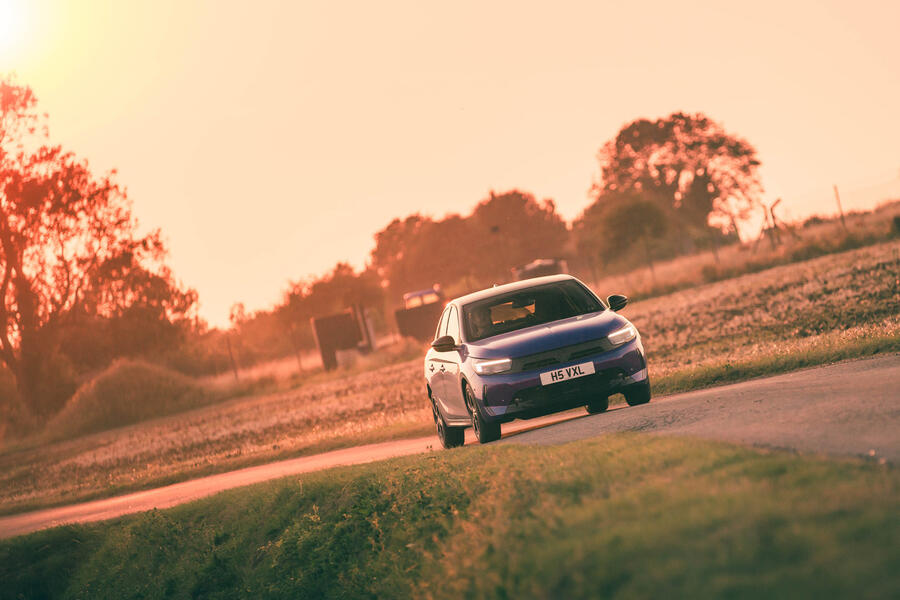
That was introduced in last year’s facelift, and six months after that, 48V mild-hybrid versions were introduced, joining two pure-petrol variants and an EV with 222 miles of range.
The mild hybrid pairs the ex-PSA Puretech 1.2-litre turbocharged petrol triple with a 28bhp electric motor and a small lithium ion battery hidden away under the front passenger seat.
It combines to produce 99bhp or, in my car, 134bhp. The 0-62mph time is 8.6sec – more than quick enough to merge happily onto fast-moving roads, which is really all it needs – and the quoted top speed is a frankly silly 133mph.
Everything is fed through a six-speed dual-clutch automatic gearbox, which I predict will annoy me in the long run, as my initial impressions are that it’s jerky, it’s slow to shift and it struggles to choose a sensible gear to be in. In combination with strong levels of regenerative braking, this makes driving smoothly around town a real challenge at times.
Kerb weight – probably the first figure on everyone’s mind whenever electrification is mentioned these days – is claimed to be 1202kg, 92kg heavier than the non-hybrid Corsa.
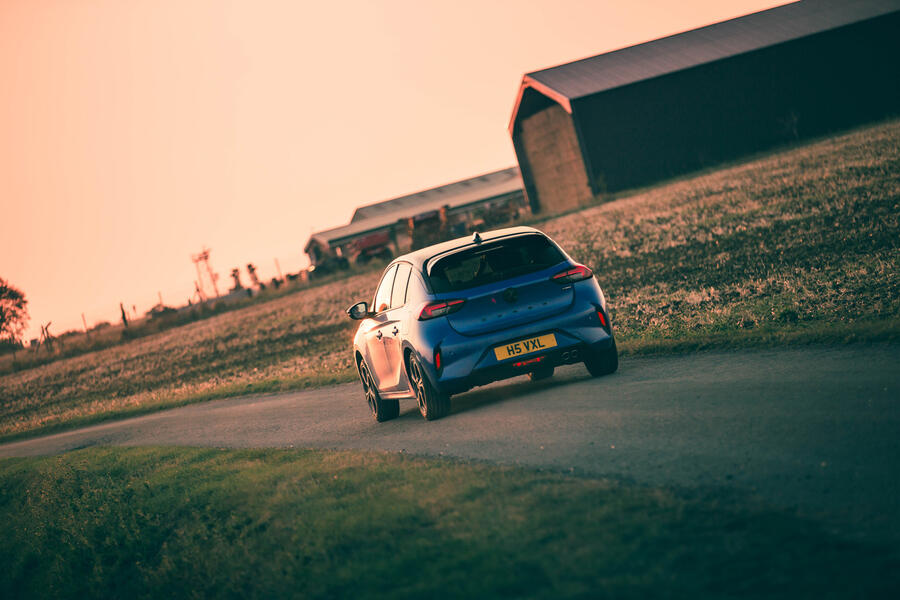
The first time I opened the door, I was surprised by the level of equipment inside. Perhaps I shouldn’t have been, given the clue in the name of this top-rung model: Ultimate. Adaptive cruise control makes an appearance, the sound system is surprisingly good and of great novel interest is the driver’s seat, which, although fitted with manual controls for adjustment, features a massage function.
I think if you had told a Corsa buyer in 2003 that this would one day be included on the spec sheet, their head would have exploded. Mind you, they would probably have the same reaction once you told them the price. My Corsa costs an eye-watering £29,630, with the only option being the very fetching Voltaic Blue paint (£600).
I know that small cars aren’t £15,000 any more, but £30,000 is undeniably a lot of money. Indeed, it’s only a smidge less than the Volkswagen Polo GTI.
In fairness, this price tag puts it bang on target for anyone who might be thinking about a Toyota Yaris Hybrid. One of those in as close a spec to my Corsa as possible, with the optional Safety Pack and a similar metallic blue paint, works out at £29,715. The almost identical Mazda 2 Hybrid is very similarly priced, as is the Honda Jazz Hybrid.
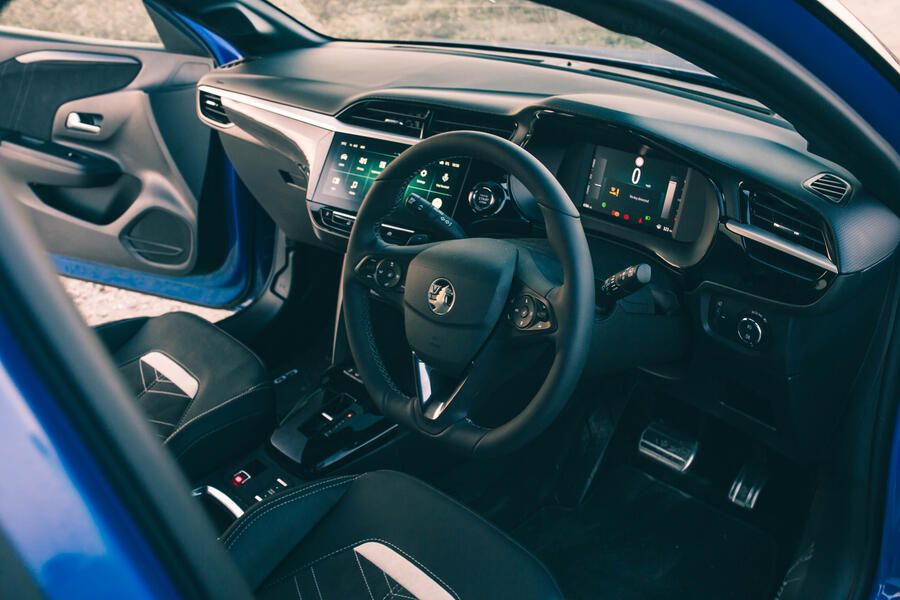
Then again, a top-spec Renault Clio E-Tech Full Hybrid can be had for £25,495 and the new MG 3 Hybridt lops another £4000 off the bill even in its fancy Trophy trim.
You would hope that the Corsa would be able to distinguish itself as worthy of sitting at the higher-priced end of the supermini spectrum, but my initial impression is that it comes across as a bit bland inside, with uninspiring black plastic everywhere and somewhat cheap-feeling materials.
At least the standard 10in infotainment touchscreen, which in my experience was slow, badly laid out and crash-prone, was as part of the recent facelift replaced by a much nicer one, with a cleaner layout and a wider aspect ratio. Apple CarPlay stretches all the way across the screen now, too – something that really helps a car to look more upmarket in my eyes.
The interior is spacious for front-seat passengers, and the 309-litre boot is pretty good for such a small car (albeit with a big loading lip), such that there’s just about enough room to lug around my photography gear. It seems that has been achieved to the detriment of rear passenger space, mind you: three adults together certainly feels tight.
Vauxhall claims combined WLTP fuel consumption of 60.1mpg for my car, yet that’s a figure I’ve seen in a pure-petrol Corsa before, so I’m interested to discover how just how high I can push the economy readout on my endless long trips around the country.
Update 2
A search for a first car for my sister turned up an interesting titbit. I had gone to look at a Citroën C1 in Bournemouth for her, with the seller flogging it on behalf of his daughter. “She’s just started a new job in Southampton, and you just can’t do that in something this small,” he said. “You need something bigger.”
As someone who used to do 500 miles a week in a Fiat 500, this baffled me no end. It wasn’t just a one-off, either. A short trawl of a few model-specific small car Facebook groups revealed a fair few examples of people thinking along the same lines. I can’t really understand why.
I bring this up because most of my trips seem to involve big motorway miles, and the Corsa comprehensively ignores the above way of thinking. It almost feels like it was designed to be a long-distance mini-GT in the style of an Aston Martin Cygnet. Okay, maybe that’s taking it a bit far (metaphorically speaking), but this car is seriously impressive for, well, a Corsa.
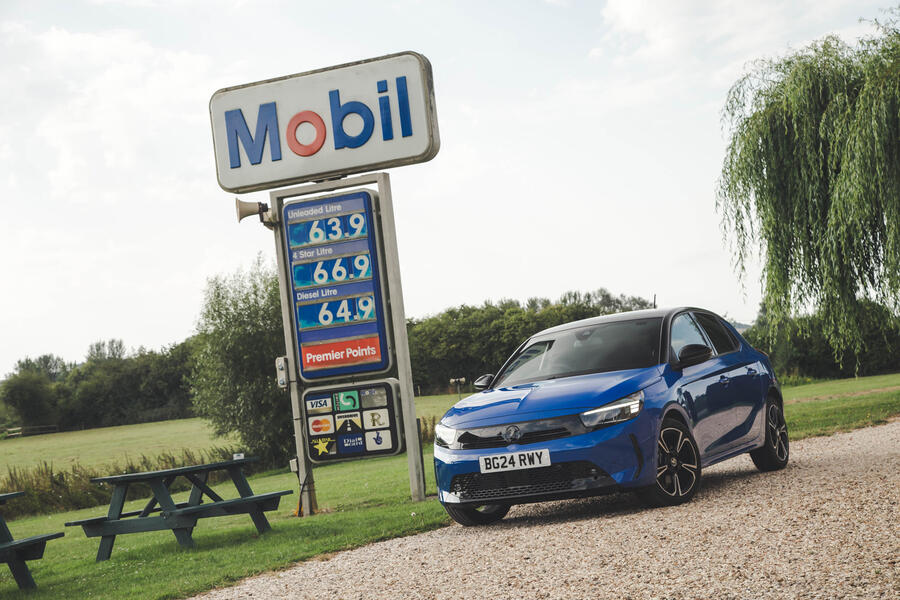
The dual-clutch transmission is geared pretty well for the job. Once you get through that initial punch of power on the motorway slip road – which, with 134bhp and 169lb ft, is more than easy to do – it slips into sixth and is more than content to sit at low revs and pull itself along with its torquey little three-pot.
What strikes you at a cruise is the noise – or rather the lack of it: it’s spookily quiet. Despite being on 17in rims with 45-profile tyres, the road roar is impressively subdued, and it’s almost whisper-quiet inside, save for some wind noise from the mirrors.
Engine noise is pretty much non-existent, too, so even if you’re one of those people who doesn’t listen to music or podcasts while driving, you’re unlikely to be driven to distraction.
Supportive seats count for a lot on long trips. The Corsa’s aren’t bad, with electronic lumbar support proving to be a lifesaver on long drives.
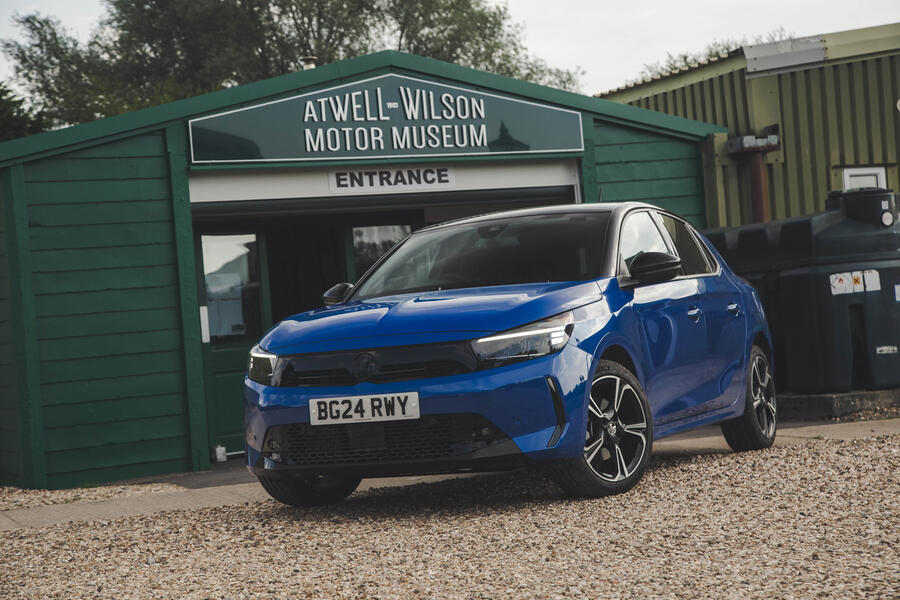
The massage function is something of a short-lived novelty: it feels more like someone unrhythmically pressing a pillow into your spine than a qualified masseur gently kneading your back.
Aside from smaller, more trivial issues such as the absence of a 200mph top speed or a rich leather and wood veneer cabin, the most obvious barrier to the Corsa presenting itself as an Aston Martin DB12 rival for a fifth of the price is the active cruise control.
It’s incredibly nervous and panics if it can see a car within what feels like the distance in which you could easily stop a fully laden oil tanker.
Concerningly, it’s too readily confused by lanes on even the gentlest motorway curves, often picking up vehicles to its left and beginning to brake quite heavily to stop what it sees as an impending collision.
It’s especially bad coming up to pass lorries – presumably due to them being that little bit wider – and it brakes harder to compensate for the speed difference.
All this would be much more bearable if you could switch between active and regular cruise mode, whether that be via a steering wheel-mounted button, as in the Toyota Corolla, or hidden in a menu, like the Mazda MX-30.
But you can’t, as far as I can work out. It’s a shame because in a world in which so many people opt to do 65mph rather than 70mph, it feels like a missing piece of the mile-muncher puzzle.
Even so, it’s wrong to assume that small cars can’t do big miles. I’m averaging about 700 miles a week in the Corsa for the time being, and I haven’t felt the need to be in anything bigger yet.
Update 3
Life with a Corsa Hybrid so far has been pretty pleasant. It’s about as fast as a normal, non-performance small hatchback ought to be, it’s economical and it’s practical enough for daily life, even when lumbered with a full load of camera equipment.
People are complimentary about it, too. A friend even remarked that it’s “too nice to be a Vauxhall”. A bit unfair to the brand, I think, but no matter.
There is one thing about it that drives me absolutely crazy, though: the ride. I can count on one hand the number of cars I’ve been in that have dealt with lumps and bumps worse than this, and most of those have been hardcore sports cars.
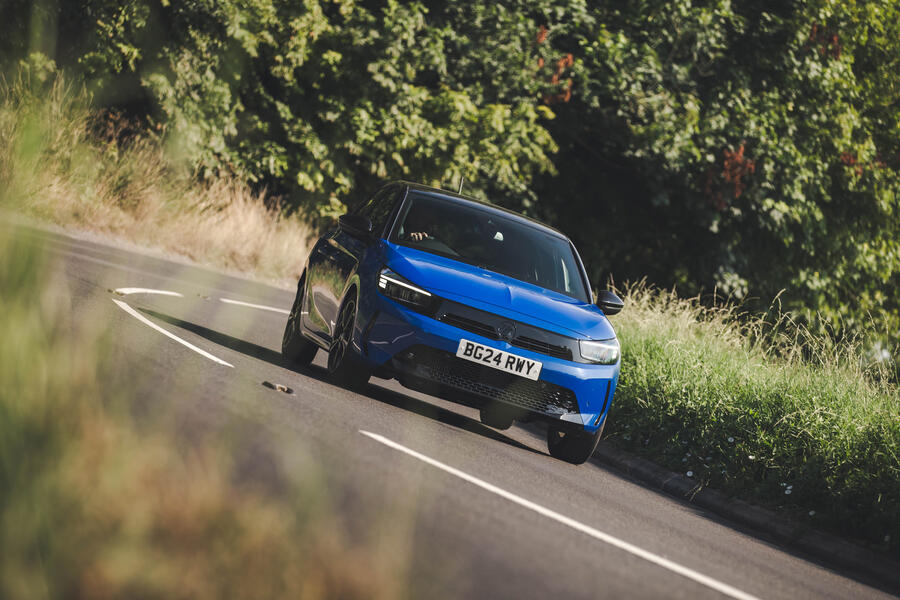
The primary ride is fine. If you were to drive this Corsa down a perfectly smooth road, you would wonder what I’m on about, as all would be well. The problem is that in Britain, a perfectly smooth road is all but a fantasy.
The second the car finds a bump on the surface, you know about it – not from seeing it but from feeling an ungodly crash as you go over it. It can make you feel as if you’re driving over a small speed bump when in fact you’re merely traversing a small pothole.
Even minor bumps – bridge expansion joints on a motorway, for example – send a shock through the car, and genuinely bumpy roads quickly become exceptionally irritating to drive down.
This ride is surelv hindered by the big, 17in wheels shod with only 205/45-section rubber, but there’s more to it than that. I got hold of a 100bhp unelectrified manual Corsa (in the one-step-down GS trim) with the same wheel and tyre combination and took the two cars on an identical route along the heavily neglected roads of Poole.
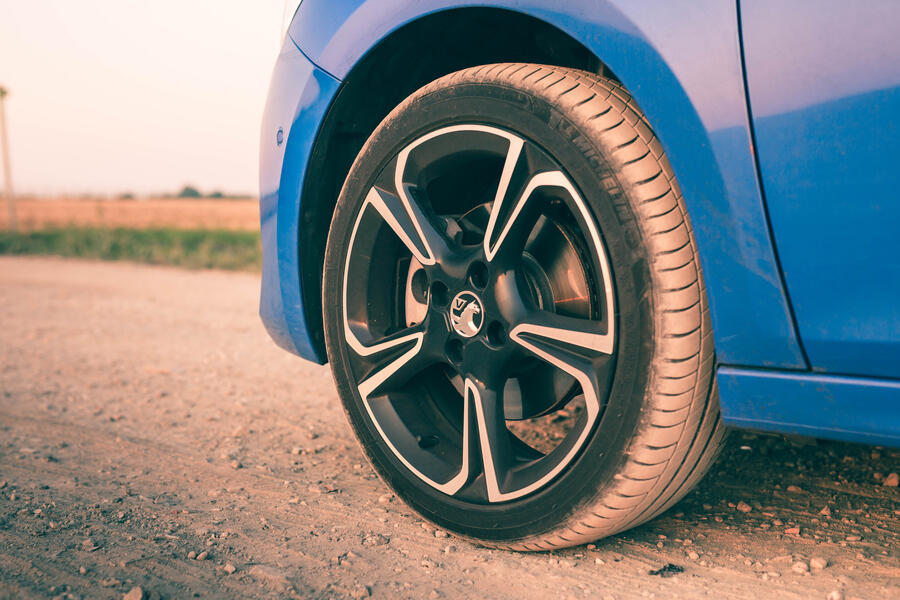
The petrol car rode noticeably better, dealing with the bumps fairly well and without most of the crashiness that plagues the hybrid.
Of course, the petrol GS is lighter than the hybrid Ultimate, but only by 100kg or so. Even with a passenger and a boot full of my work gear, it still rode much better than its pricier counterpart.
It feels as if the suspension is sprung much more firmly in the hybrid – too firmly. You would expect it to be more softly sprung to deal with that extra weight, but there’s seemingly no need for it to be at the level it is.
This seems to be a recurring theme with Stellantis products: colleagues have reported similar discrepancies between electrified and non-electrified products from other brands in the conglomerate.
My Corsa comparison test revealed something else interesting, too. The nine-mile route I drew up took me from my home in the suburbs right into the congested centre of town, via some short stretches of dual carriageway and a number of faster roads too.
Traffic levels were about the same on each run (there was a one-minute difference in times). The petrol recorded a 42.7mpg average, the hybrid 45.5mpg. An improvement, sure, but is 2.8mpg around town worth spending more than £2000 extra to achieve?
It was a similar story on longer drives: the petrol typically hovered around the 57mpg mark, the hybrid about 3mpg higher. Again, slightly better, but worth the expense..?
Final update
The Corsa name turns 43 years old in 2025, having first graced the mainland European version of the boxy hatch that we Brits are more likely to know as the Nova in 1982.
The first UK Corsa – the round, cuddly hatch that pretty much defines the ‘blobiect’ school of design that became so prevalent throughout the 1990s – hit our potholed roads in 1993 and few other nameplates are now quite so ingrained in our mental image of the British road scene.
That said, in practice most people simply look straight through the Corsa. Much like a first-generation Nissan Qashqai or, perhaps more appropriately, a Ford Fiesta, it’s just… there, simply a part of the traffic jam making your Monday morning worse or occupying the last parking space on your street, worthy of no further thought.
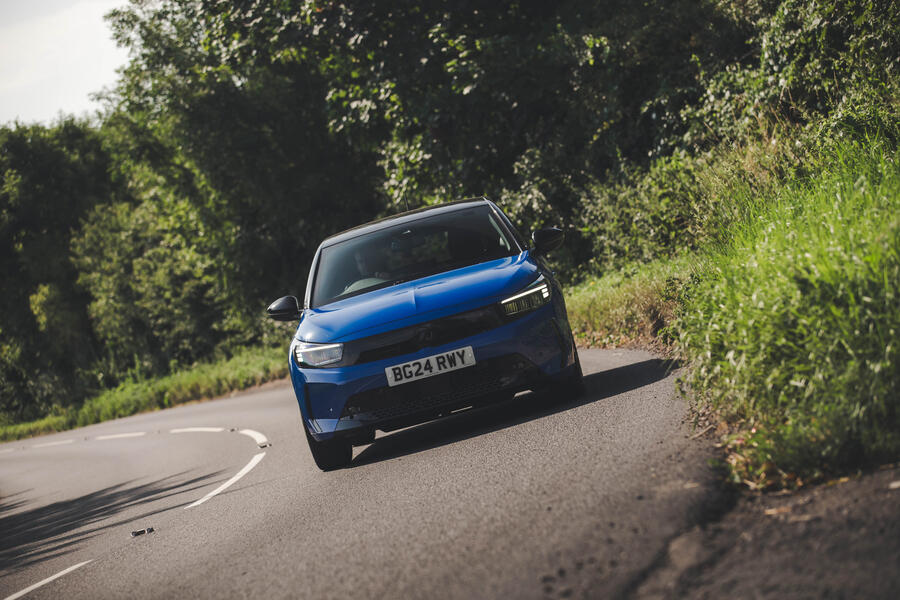
The aforementioned Ford was always the yin to the Corsa’s yang, and a year and a half into the post-Fiesta world, the Vauxhall silently soldiers on, unappreciated by most.
It popped up on the top 10 bestseller’s list a couple of times during last year but failed to take even a step towards the heights it hit in 2023 when the Corsa was the third-most-sold new car in the country.
So are buyers missing out on something special by discounting the Corsa? Based on my experience, I’ll admit that the Corsa hasn’t done a huge amount to enamour me over the past few months, but it’s done little to make me actively dislike it either.
Let’s start with one important thing I liked: the way it drove on the open road. The 134bhp hybrid set-up in my car was all you could ever need in the real world, with the 1.2-litre turbo petrol three-cylinder providing more than enough power all through the rev range.
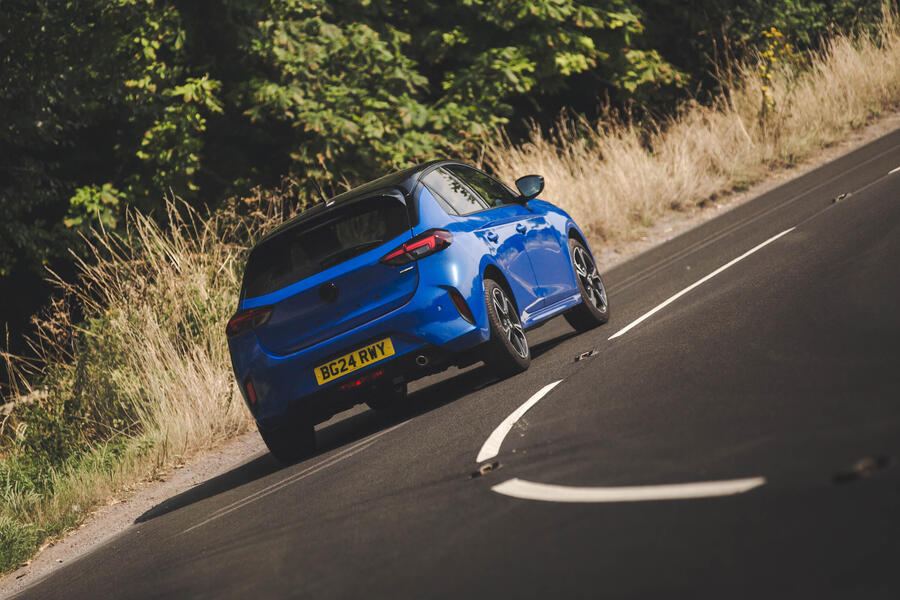
With its 0-62mph time on the right side of nine seconds, I never had to worry about picking up enough speed to match the flow of a fast-moving motorway, and the in-gear acceleration was better than I had initially expected.
Overtaking was a decidedly straightforward experience: you’d simply mash your foot to the floor to kick it down a gear or two and you’d slide easily past the truck/tractor/Honda Jazz doing 35mph in a national speed limit zone for no conceivable reason. It’s a shame, then, that this powertrain has just been removed
from sale, leaving only the slightly gutless 99bhp hybrid and non-hybrid petrol engines on sale.
The car proved surprisingly good fun in corners. Body roll was well contained and lateral grip plentiful, which made it feel stable enough for me to throw it about when I took the long way home. It didn’t prompt me to go for a drive just for the sake of it, but neither did I constantly wish I was driving something else whenever I found myself on an entertainingly winding road.
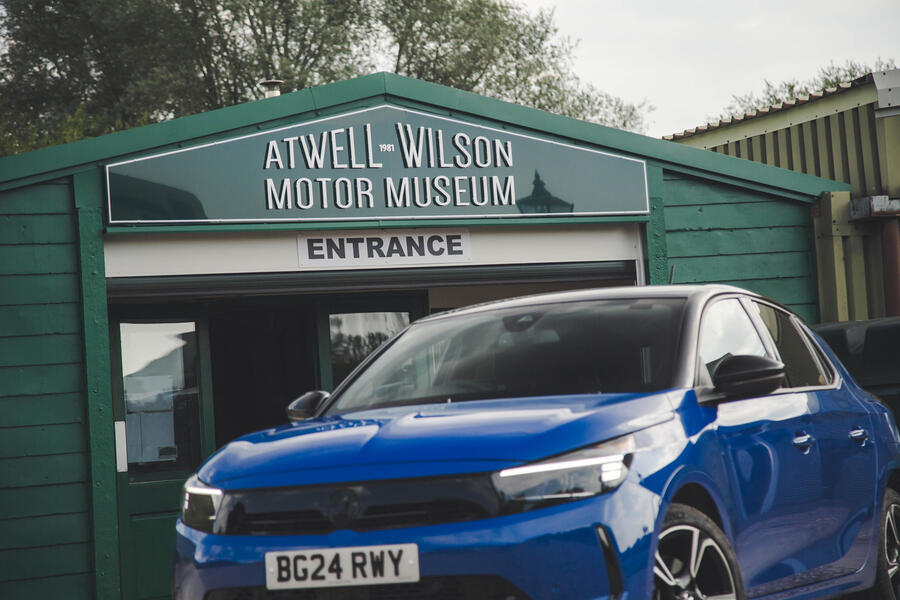
The Corsa also proved a capable motorway cruiser – something people seem to think a small car is incapable of being. Engine noise and road noise were wonderfully quiet compared with other superminis, and the seats were superbly comfortable.
That was great because, with a 45-litre fuel tank, it was more than happy to consistently travel well over 400 miles once brimmed. Economy was impressive overall, typically hovering just under 50mpg, albeit much less than the official combined 60.1mpg.
It wasn’t all sunshine and roses, though. As comfortable as the seats were, the driving position itself was about as unergonomic as it gets. A few colleagues reckon it has to do with the car’s platform being designed primarily for the i-Cockpit layout used by Stellantis stablemate Peugeot.
It certainly felt that way, with the cheap-looking instrument screen always seeming to be slightly obscured. I’m a pretty normally proportioned person, but no matter what I did – adjusted the column, changed the seat distance, sat lower – there was always something off that no amount of fiddling could fix.
The tiny windscreen aperture had a seemingly shallow rake, which made it feel very far away, and the rear-view mirror appeared to be about twice as large as it ought to be, blocking what little you could already see forward.

A black headlining and dark, glossy plastics seemed to suck in all of the light, making the interior a dim place to be. Space was limited too: five-up drives in the Corsa were enjoyed by none. The boot was as big as you could hope for, mind you.
My main problem with the Corsa hybrid is simple: the existence of the non-hybrid. I ran one in lower GS trim for a while to see how it compared and made some interesting discoveries.
Not only did it fix the hybrid’s appallingly crashy ride, but it was just as economical overall. In fact, it was a mighty 0.1mpg more efficient than the hybrid. And, in baggy but liveable manual guise, it’s £2k cheaper.
Are you missing anything special by not being more aware of the Corsa? Not really, but it’s a perfectly capable car nonetheless.
Vauxhall Corsa 1.2 Turbo Hybrid 136PS Ultimate
Prices: List price new £29,030 List price now £29,255 Price as tested £29,830
Options: Voltaic Blue Paint, £600
Fuel consumption and range: Claimed economy 60.1mpg Fuel tank 45 litres Test average 49.0mpg Test best 50.2mpg Test worst 47.8mpg Real-world range 485 miles
Tech highlights: 0-62mph 8.8sec Top speed 133mph Engine 3 cyls in line, 1199cc, turbo, petrol, plus electric motor Max power 134bhp Max torque 170lb ft Transmission 6-spd dual-clutch automatic, FWD Boot capacity 309 litres Wheels 17in, alloy Tyres 205/45 R17 Kerb weight 1192kg
Service and running costs: Contract hire rate N/A (£268 for the 1.2 Turbo Hybrid 100PS Ultimate) CO2 106g/km Service costs None Other costs None Fuel costs £910.16 Running costs inc fuel £910.16 Cost per mile 13 pence Faults Mysterious crackling after long journey, infotainment freezing


